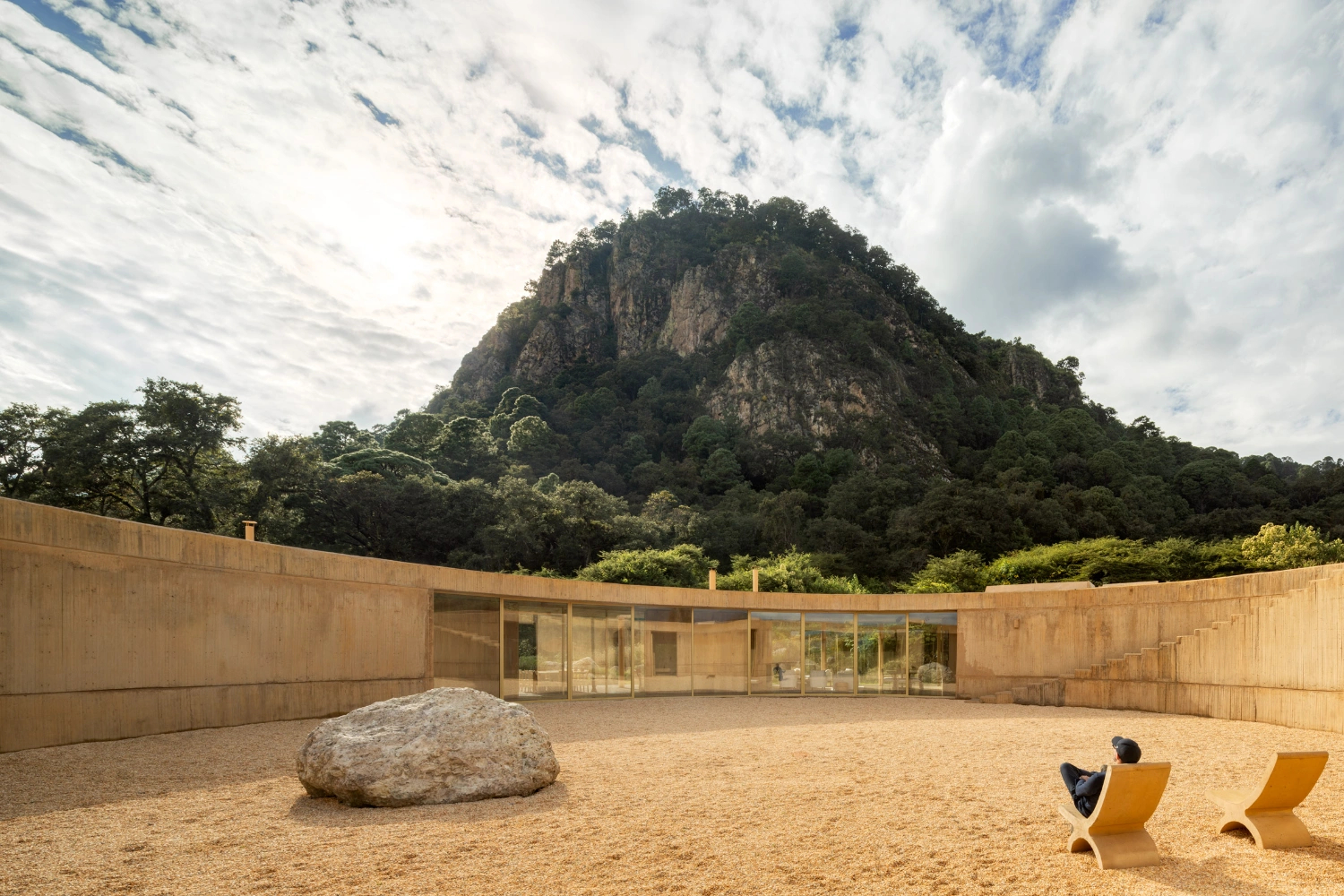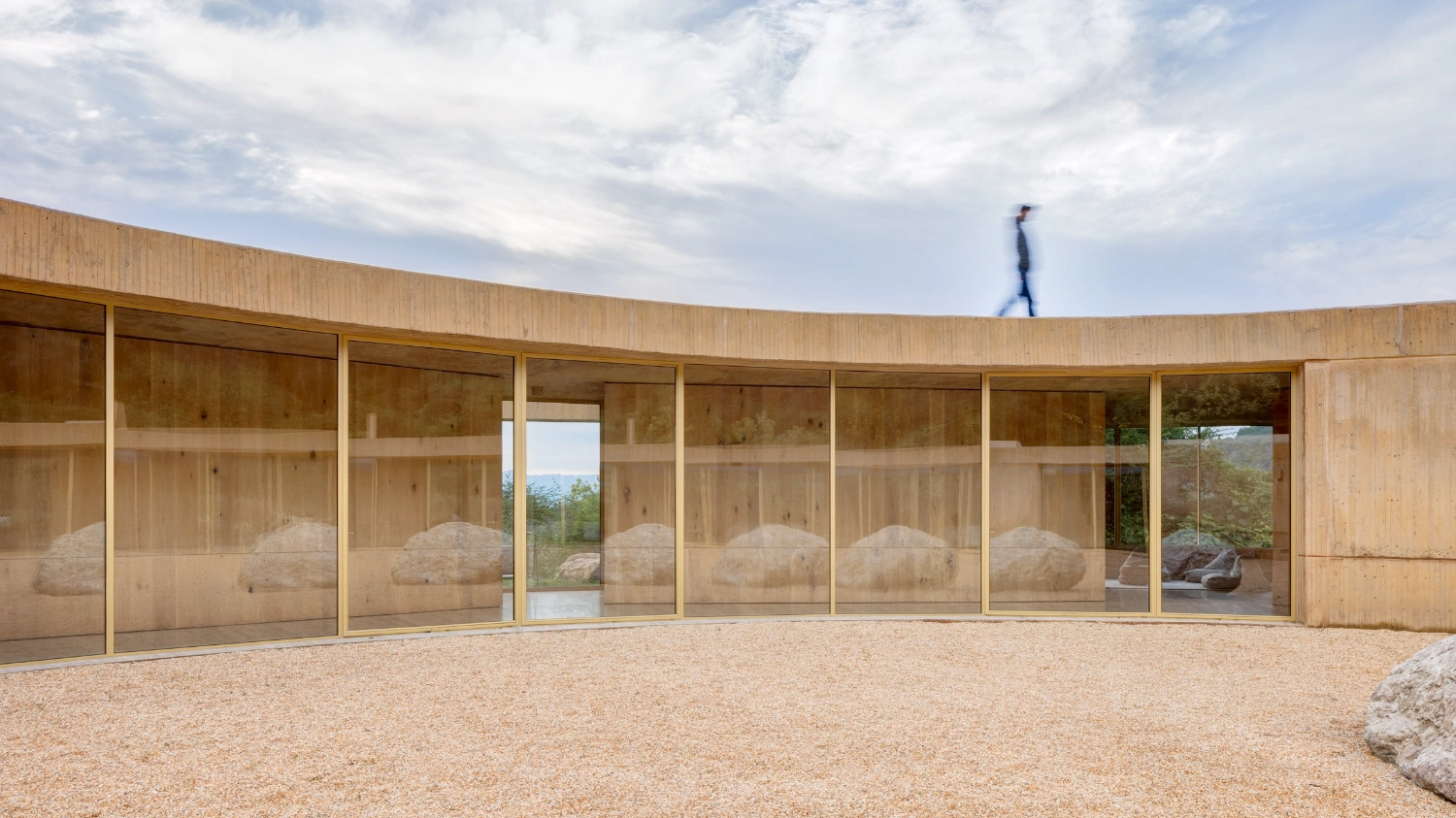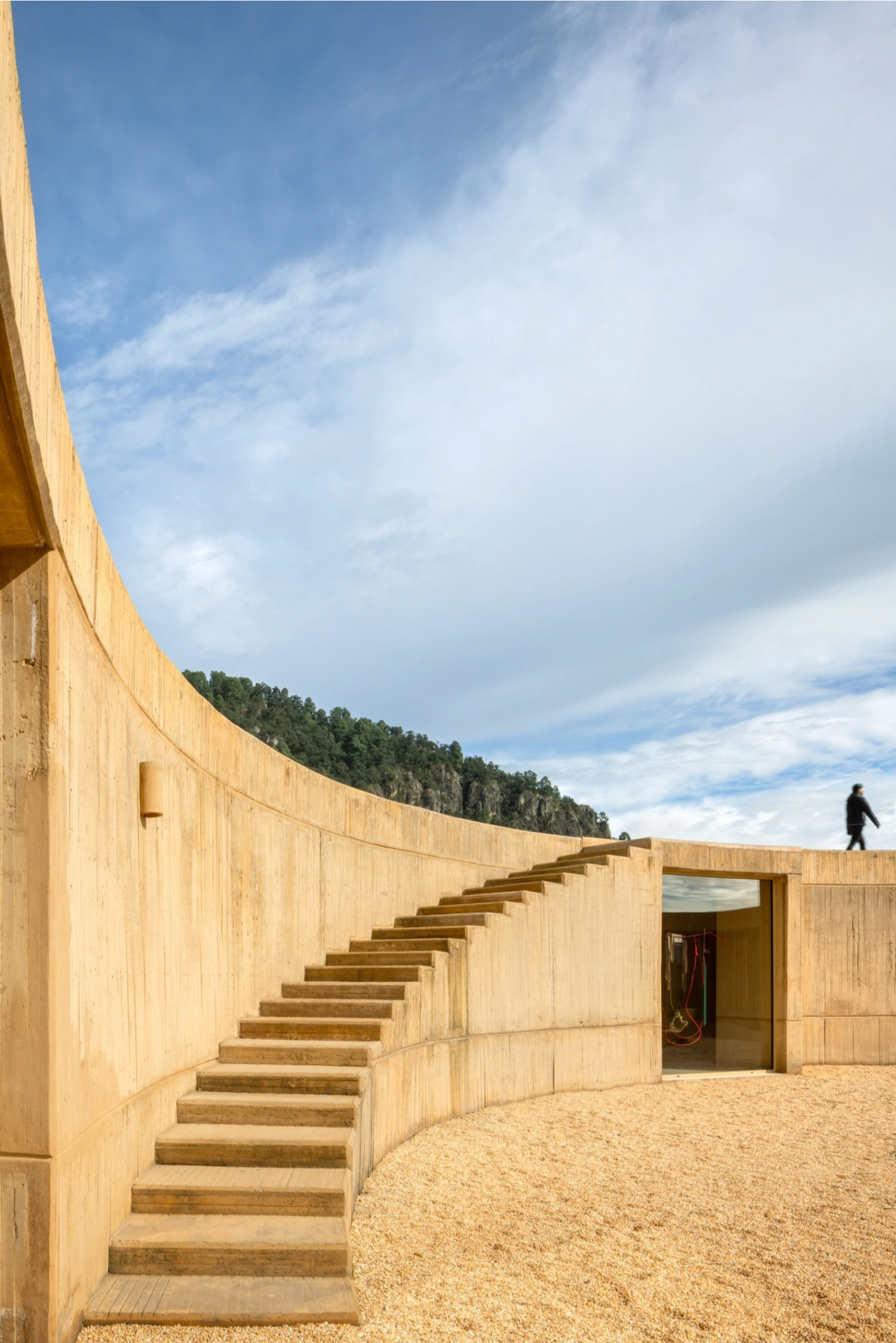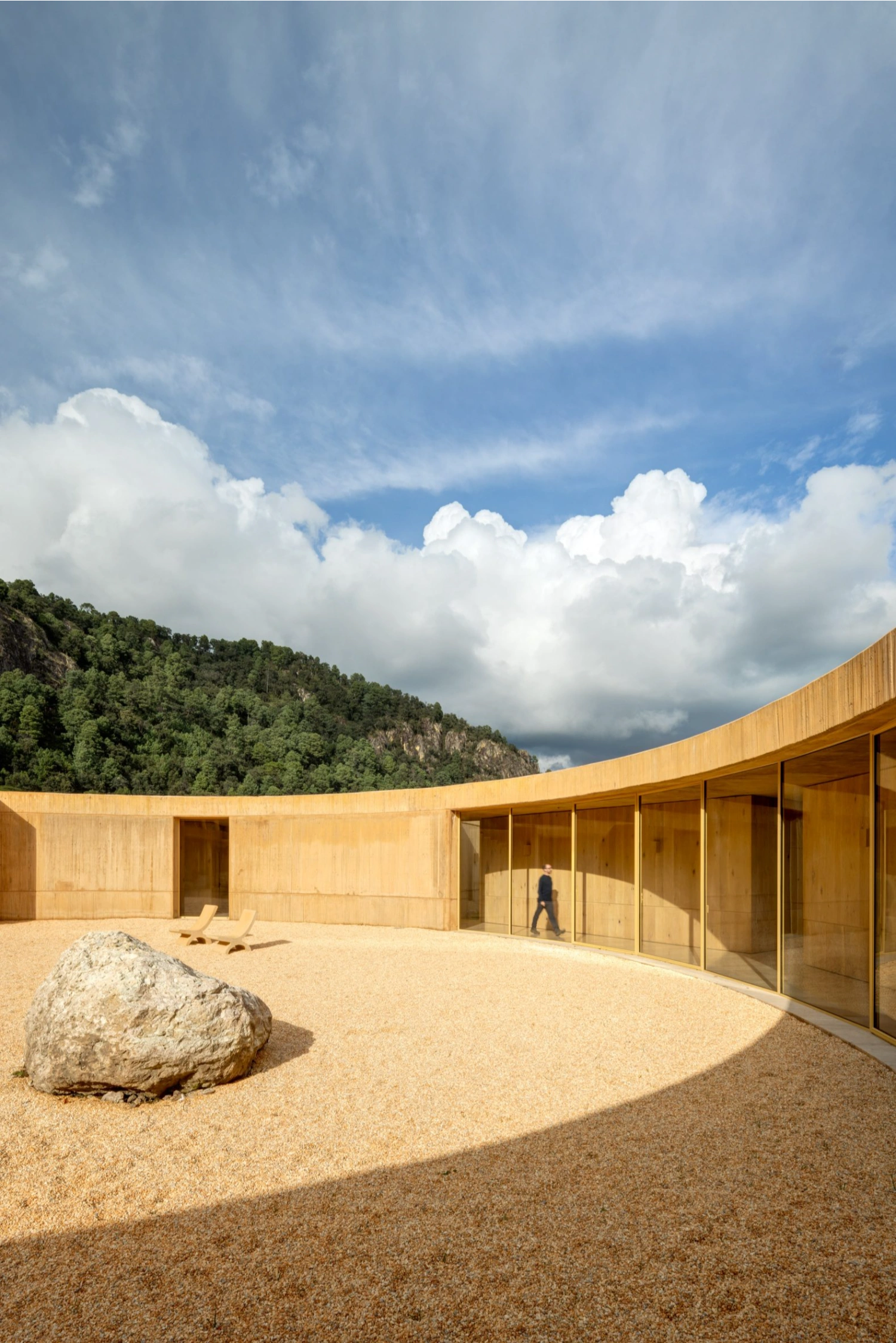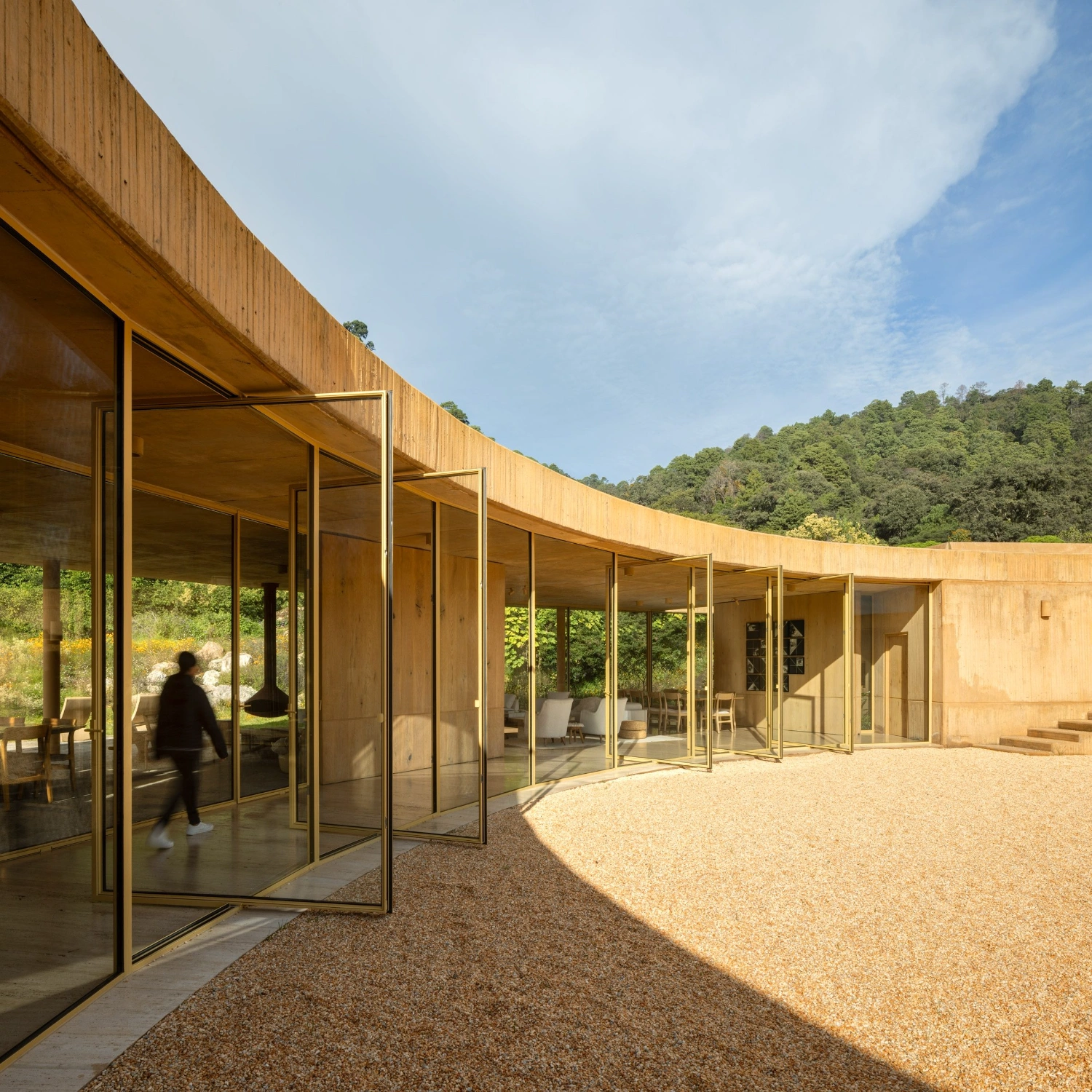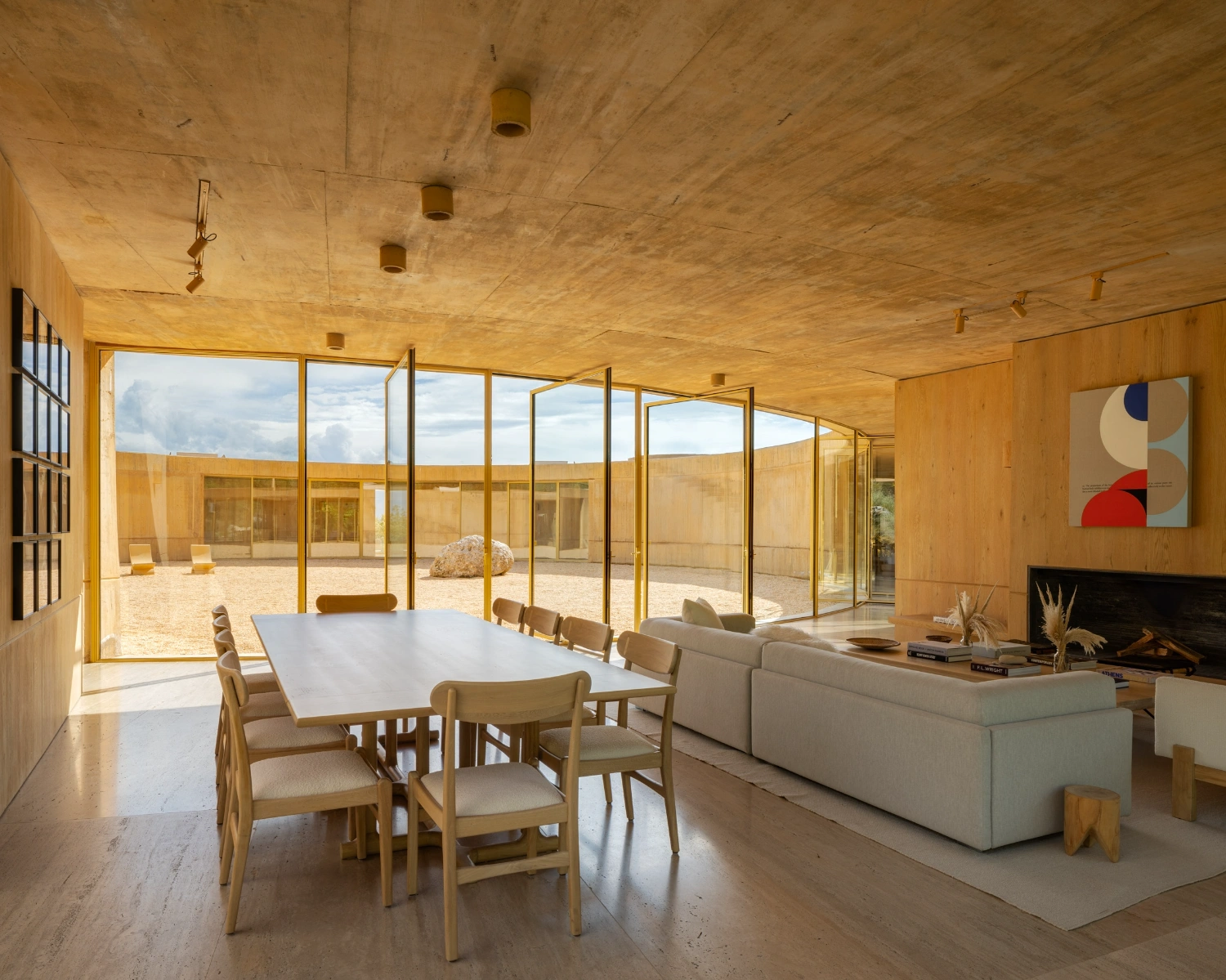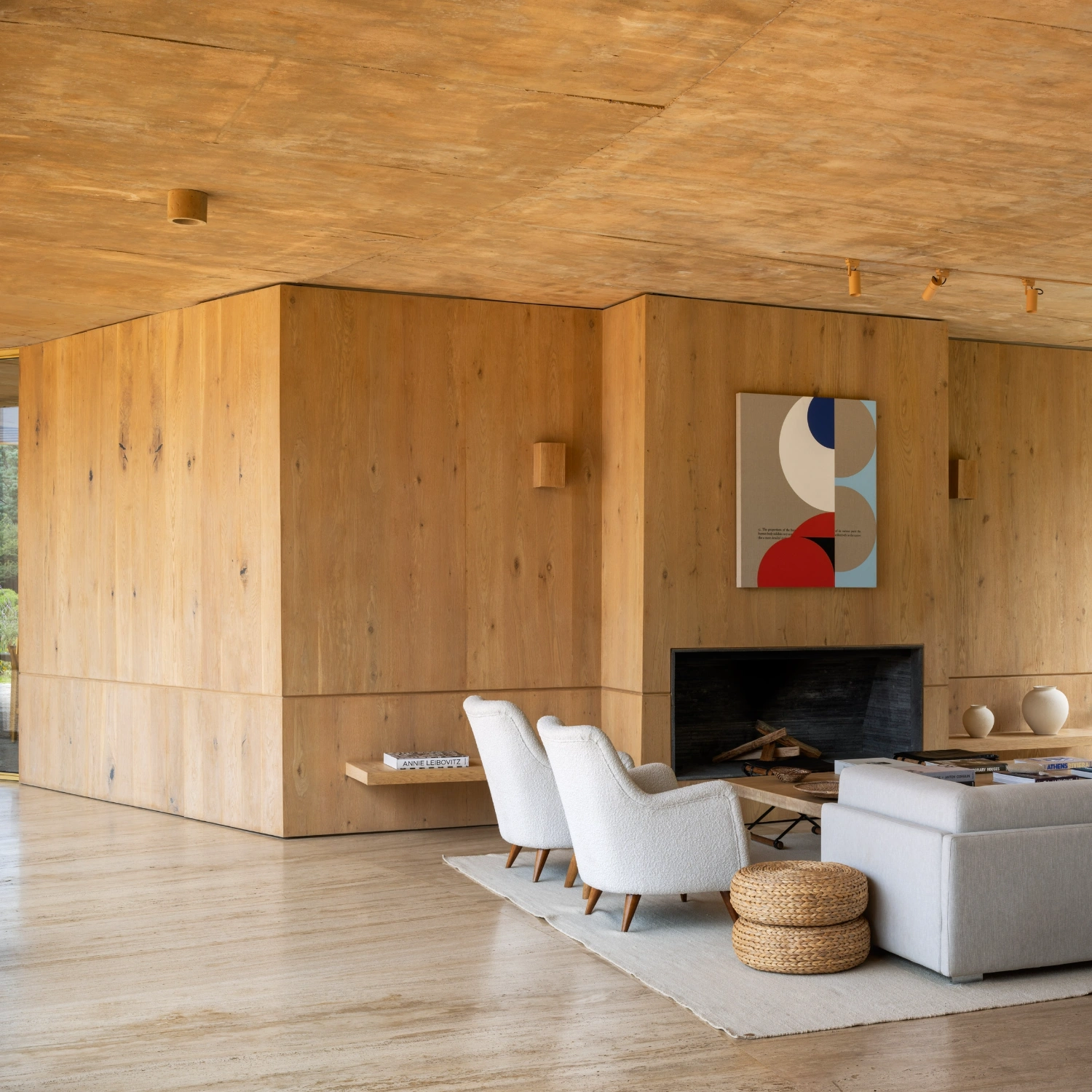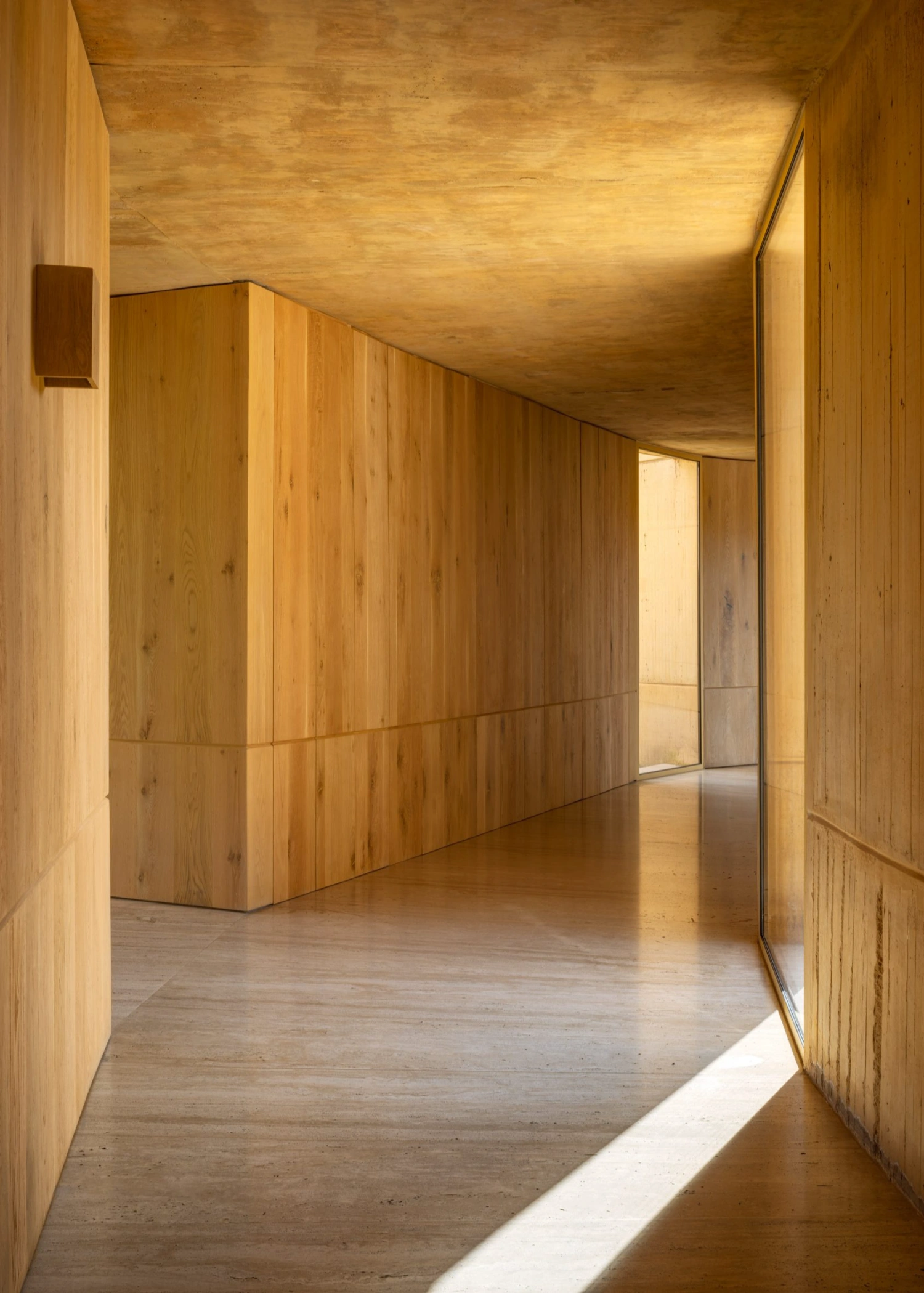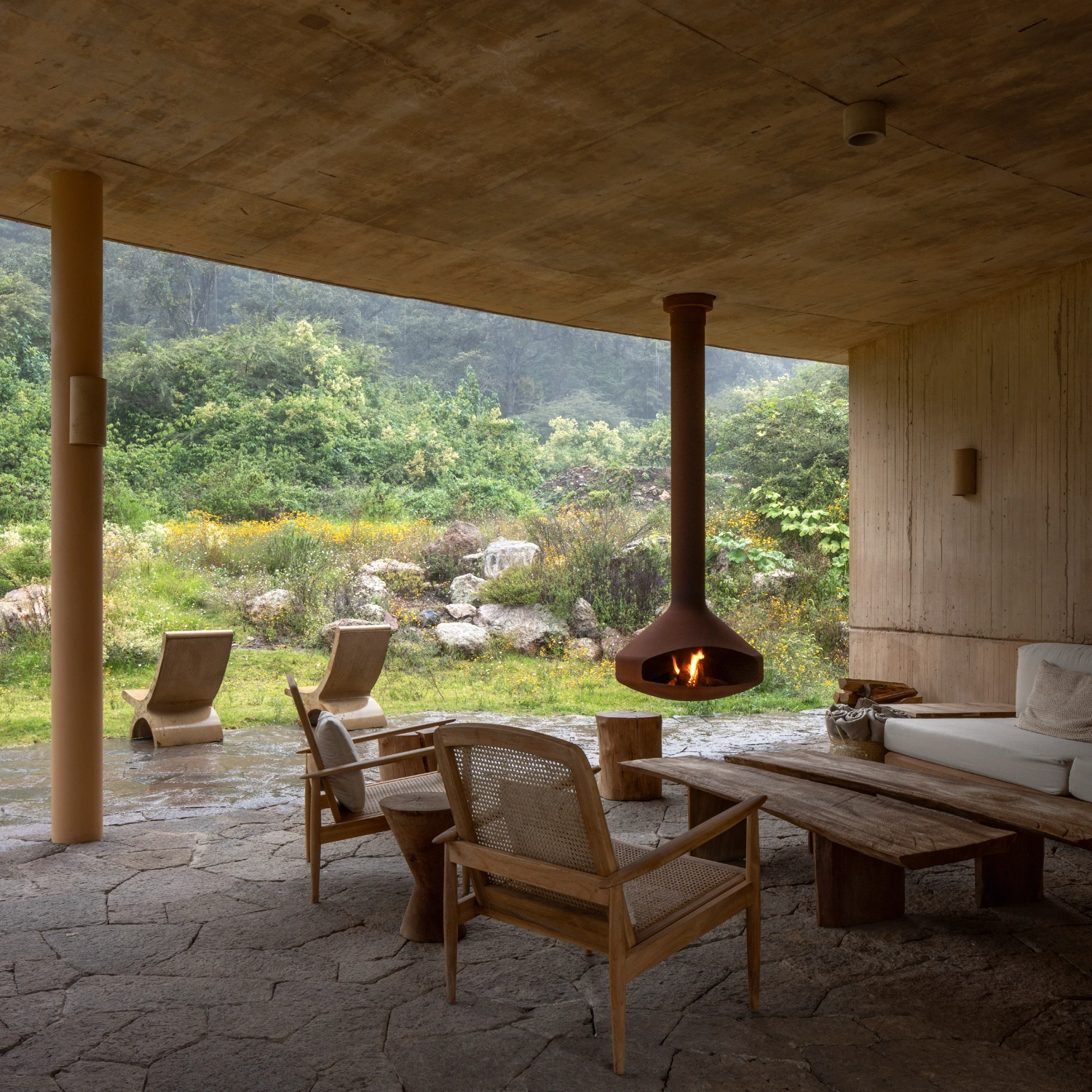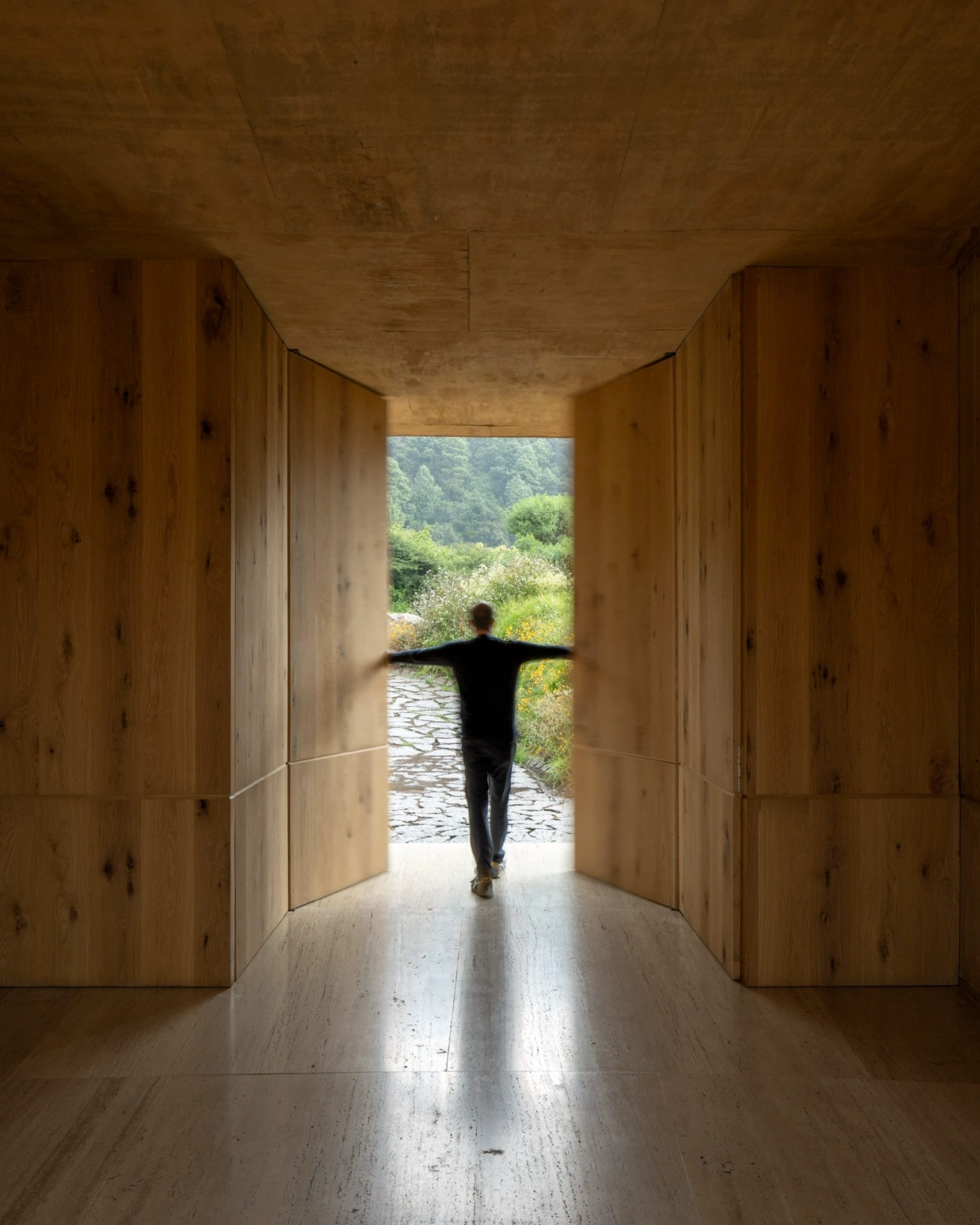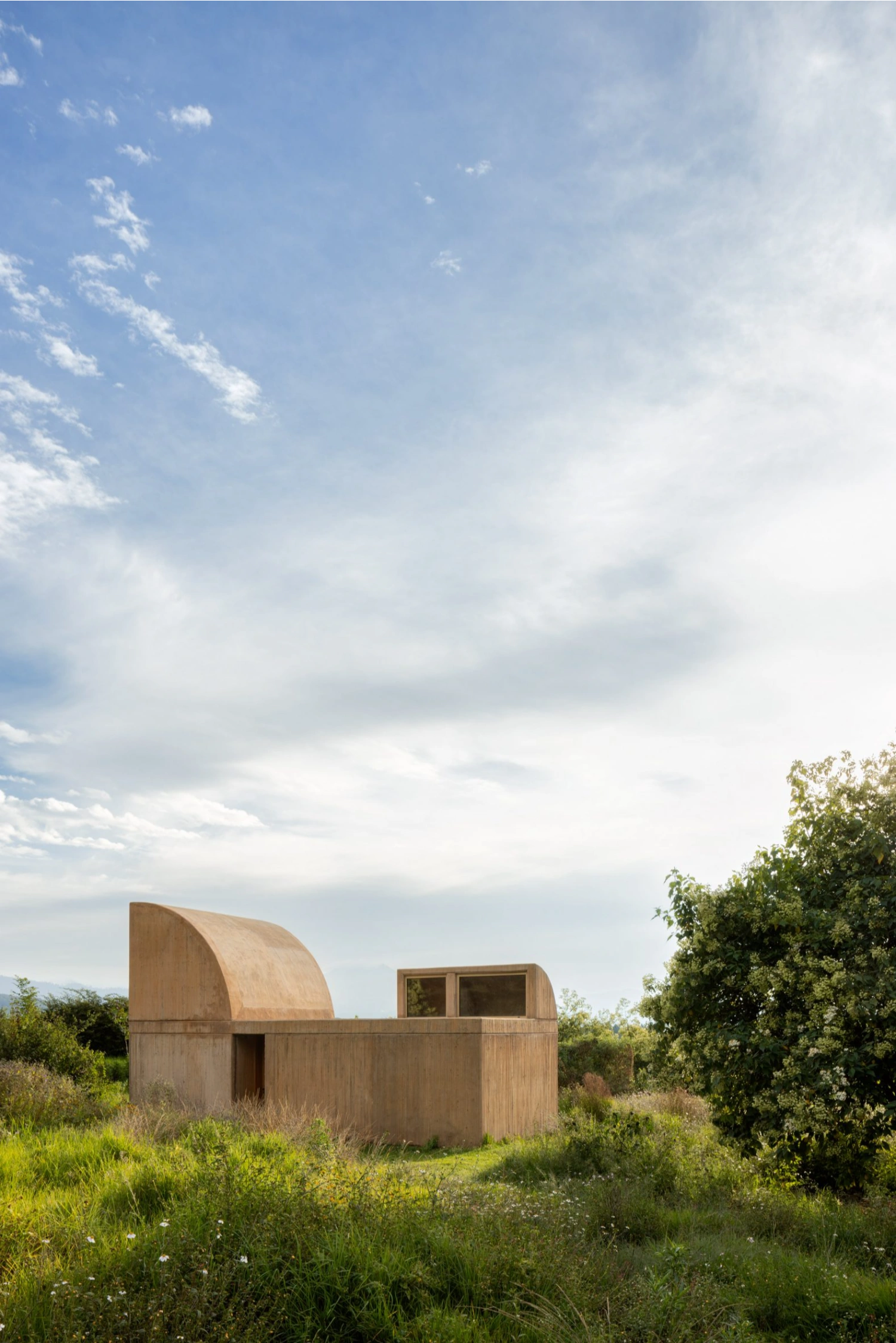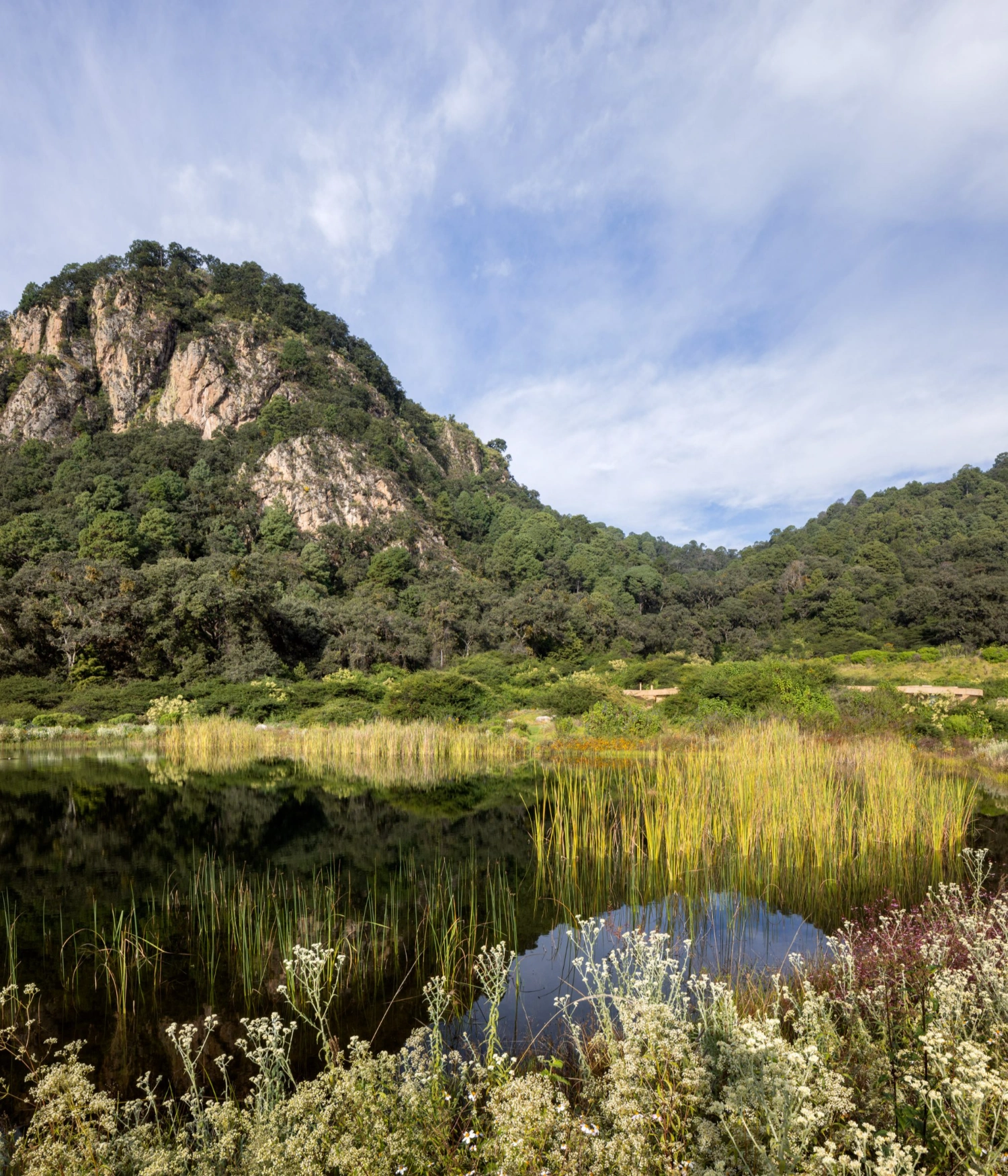A circular home near Valle de Bravo in Mexico transforms light and shadow into architecture, merging geometry, material, and landscape into a living instrument for observing time and place.
House 720 Degrees, completed in 2024 and designed by Fernanda Canales Architecture unfurls across two acres of La Reserva Peñitas as a continuous ring—an architectural horizon line that both measures and inhabits time. Conceived as a “solar clock,” the project explores how geometry and atmosphere can synchronize with the rhythms of light and shadow.
The house’s form is deceptively simple: a circular plan organized around an open-air courtyard. This void, the project’s central eye, anchors the home while drawing the landscape inward. By doubling the conventional 360-degree view, the architects have transformed domestic space into an immersive panorama. The ring’s curvature reframes the surrounding mountain and volcano, offering a subtle choreography of shifting perspectives throughout the day.
The material language deepens this dialogue with place. Concrete mixed with local soil lends the exterior a muted, earthen hue—simultaneously monumental and camouflaged. It absorbs the valley’s changing light and temperature, merging with the terrain rather than asserting itself upon it. Inside, oak and stone create continuity with the site’s textures, while handcrafted furniture and lighting, made on location, reinforce a sense of rooted craftsmanship.
Functionally, the circular plan yields a fluid yet private layout. Rectilinear rooms are arranged along the circumference, divided into three volumes: the main house, a guest studio, and an auxiliary pavilion. The radial circulation blurs the boundary between indoors and outdoors, allowing air, light, and sound to pass through the home with quiet precision. Cross-ventilation, thermal mass, and solar energy systems ensure the building’s self-sufficiency—architecture as ecosystem.
Perhaps most striking is the project’s ability to scale intimacy within expansiveness. Despite spanning over 1,100 square meters, the home’s low profile and sunken courtyards foster a domestic, almost meditative atmosphere. Canales’ design does not monumentalize form; it dissolves it into experience. In this way, House 720 Degrees transcends the notion of a residence, becoming a spatial device for observing the convergence of architecture, landscape, and time.


